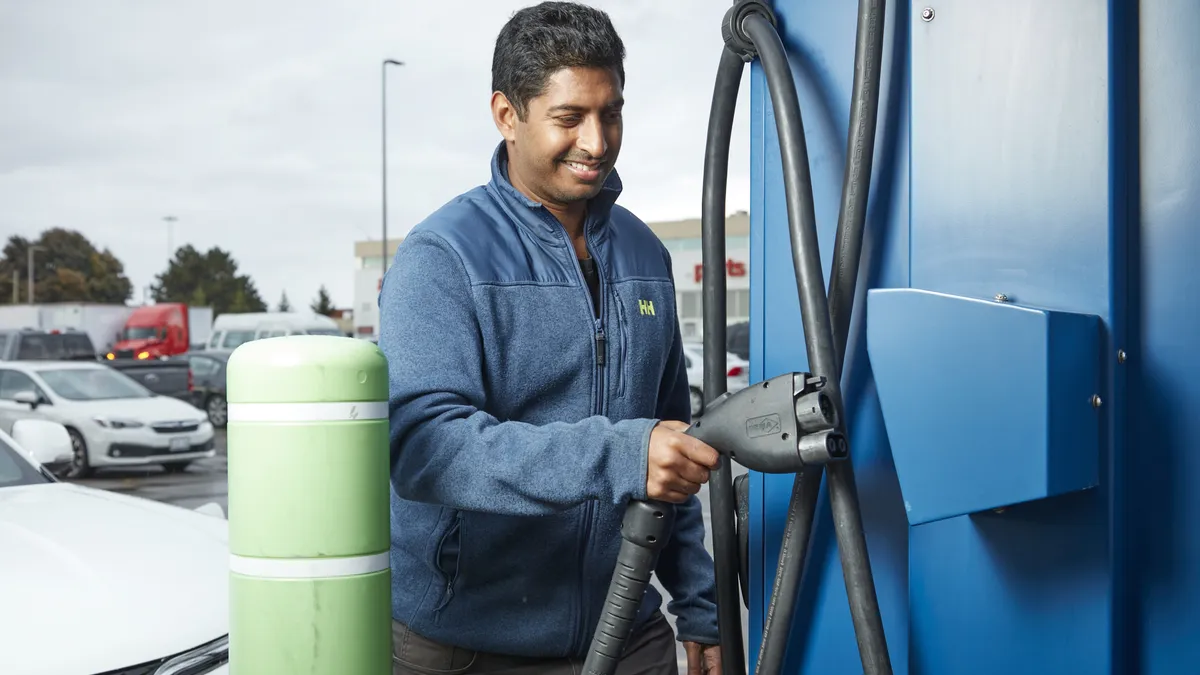Electric vehicle (EV) sales have notched a succession of records in 2023. Each of the first three quarters of 2023 saw record sales, and annual EV sales in the U.S. are expected to surpass one million for the first time ever. In California, EVs account for about one-fourth of all new vehicle sales.
Even with the steady drumbeat of EV sales records, though, headwinds and questions that pose genuine challenges to the transition to electric transportation have come into focus. This is problematic for many reasons, not the least of which being that scaling EVs is essential to achieving ambitious decarbonization and net-zero targets.
An inescapable challenge that EV makers, utilities and policymakers must address quickly is the role charging reliability plays in fueling growing and sustainable demand for EVs. Critics point out that public charging isn't accessible or reliable enough today to inspire drivers to purchase an EV.
“What happens is that EV drivers anxiously roll up to EV chargers and oftentimes they're out of service, or they're at half power, or suffering from network or payment glitches,” said Frank Fata, global head of utilities for the EV charging company FLO. “Reliability issues like these can give EV charging a bad reputation unless industry participants address them.”
Following the money, not reliability
The genesis of today’s charging reliability challenges can be traced back to the origins of the charging industry. Funding for a significant portion of the initial deployment of EV chargers in the U.S. came from the Volkswagen Clean Air Act Civil Settlement, which required the Volkswagen group of companies to invest large amounts in EV charging infrastructure as part of the settlement.
While the ensuing investments helped to kickstart EV charging in America, some believe they lacked focus on reliability, the consequences of which are still being felt today. “It got units out into the world,” Fata said. “But most of these units and host networks were not built by vertically integrated organizations. Consequently, the software may have been developed from one party, power management components from another supplier, customer-facing applications, and the mobile app from another party. It was a quick yet functional solution that met the funding requirements of the moment but fell short on network and charger availability we now call uptime.”
The charging network that emerged in America as a result of this process, though it is sizeable, manifests reliability problems that legislators and industry participants are now working to remedy. For example, a study released by the University of California at Berkeley in 2022 found that only 72.5% of the 657 EV fast chargers tested in the San Francisco Bay Area were functional. This year, however, California Governor Gavin Newsom signed a new law, which was sponsored by FLO, requiring EV charging companies that receive public funds to collect and report on their uptime. The law also requires beneficiaries of National Electric Vehicle Infrastructure (NEVI) funding to demonstrate average annual uptime of at least 97% on their public fast chargers.
An expanded view of reliability, and getting to 99.9999%
From an EV driver’s perspective, reliability is easy to define: it is the expectation that a public charger will work when needed. Mandating 97% uptime is a move in the right direction, but it is not significant enough. Some observers point out that even with 97% uptime, a charger could still be out of service for nearly 45 minutes each day. “I don’t think anybody would accept that from their cell phone carrier,” Fata said. “We need to get to 99.9999%, just like the telecom companies.”
Beyond improving uptime, greater reliability also serves utilities tasked with managing a decarbonized grid. For instance, as chargers proliferate to better meet demand, at scale they represent a significant load that utilities must control to effectively manage peak demand and maintain grid reliability. “To help ensure grid reliability, the industry is moving towards chargers that communicate, cooperate, and contribute to energy management with utilities. This way, utilities can leverage the actionable data they need to proactively have their hand on the volume control, so to speak,” Fata said. “Which means they have visibility and direct access to curtailing EV charger loads during peak periods and may selectively turn them down to operate with confidence.”
What is clear is that a more ambitious approach to reliability that includes nearly 100% uptime is difficult to be achieved unless it is spearheaded by a vertically integrated charging company, like FLO. “We design, engineer, assemble, and build the software that goes into our chargers and network cloud. We govern the complete process as a vertically integrated equipment and network provider focused on quality and uptime for customers,” said Fata, who also notes that some of FLO’s original chargers were built to supply the Canadian utility Hydro-Québec and had to achieve its high reliability standards. “If there is ever an issue with a FLO charger, there isn't any finger pointing to third parties, we take care of it. This gives us a tighter grip on the quality and reliability, and ultimately, the customer experience.”
The reliability of FLO’s vertically integrated approach is already being demonstrated in places like New York City, where its streetside chargers have a recorded uptime of 99.9% for the past four quarters. “Almost 15 years after FLO was founded, reliability remains part of its DNA, even though the company has grown and sold over 100,000 chargers,” Fata said. “That quality is not something that we've compromised on, and it’s why we've earned a reputation for reliability.”










